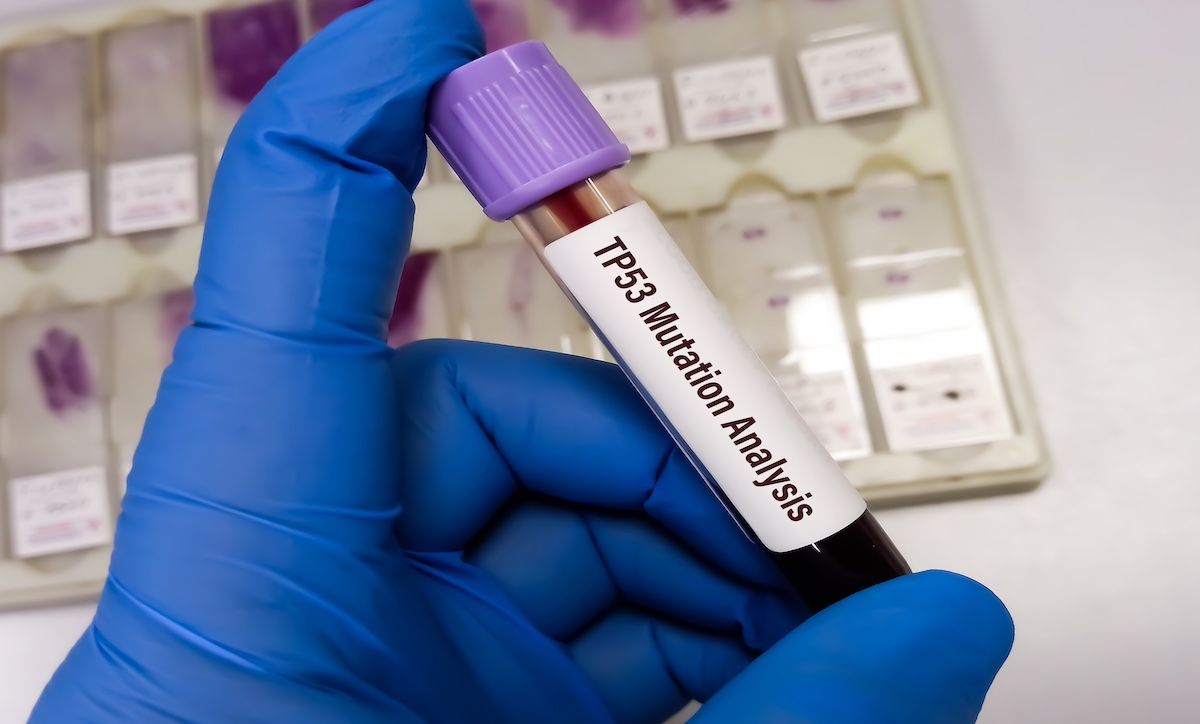- Center on Health Equity & Access
- Clinical
- Health Care Cost
- Health Care Delivery
- Insurance
- Policy
- Technology
- Value-Based Care
TP53-Mutated MDS/AML Posttransplant Treatment Gaps
The rate of relapse among patients with TP53-mutated myelodysplastic syndrome (MDS) or acute myeloid leukemia (AML) was similar among those who underwent allogeneic hematopoietic stem cell transplant vs those who did not.
Outcomes of patients with TP53-mutated myelodysplastic syndrome (MDS) or acute myeloid leukemia (AML) remain negative despite the utilization of allogeneic hematopoietic stem cell transplant (alloHSCT), suggesting the need for a novel approach in treating these patients, according to a study published in European Journal of Haematology.1
The standard treatment approach in patients with the TP53 mutation is to use cytotoxic agents to bring the patient to remission, followed by alloHSCT to induce a graft-vs-tumor effect and establish an immunocompetent hematopoietic system, the investigators wrote.
Recent studies question the utility of alloHSCT in patients with a TP53 mutation, as the rate of posttransplant relapse remains very high. The investigators reviewed past outcomes of patients who underwent alloHSCT vs patients who did not undergo transplant to evaluate the true effectiveness of transplantation.
investigators suggest that characterization of the TP53 mutation at diagnosis and longitudinal tracking of TP53 clonal dynamics can help to individualize treatment | Image Credit: MdBabul - stock.adobe.com

Eight-three patients were included in the study, with 38 patients in the alloHSCT cohort and 45 in the non-HSCT cohort. Those in the alloHSCT cohort were younger (median age, 63 vs 72 years), the investigators found.
In evaluating the outcomes, the investigators saw that more than half of the patients achieved morphologic complete remission (CR), at 57.9% vs 56.6% in the alloHSCT and non-HSCT cohorts, respectively. Measurable residual disease was found in most of those with CR (57.9% and 76.5%, respectively).
Furthermore, there was no statistically significant difference in the rate of CR after low-intensity induction therapy vs high-intensity induction therapy regardless of whether the patient received alloHSCT (60.8% vs 47.1%; P = .32), the investigators found.
For patients in the alloHSCT cohort, the median time to receiving a transplant was 6.0 (range, 2.8-45.8) months, and their median follow-up was 15.1 (range, 5.8-88.2) months compared with 5.7 (range, 0.2-22.9) months in the non-HSCT cohort.
Additionally, median disease-free survival and overall survival (OS), respectively, were 11.7 and 15.9 months for the alloHSCT cohort and 4.1 and 5.7 months for the non-HSCT cohort, according to the investigators. Corresponding nonrelapse mortality was 22% and 44% at 12 months.
There are multiple pathways that have been utilized to create remission in MDS/AML, including attempts to restore the TP53 mutation, checkpoint inhibition, and suppressing the MDM2/ARF4 pathway. However, these methods continue to lead to nondurable remission, which has prompted the need for a retrospective study such as what the investigators conducted.
They found similar outcomes as previous studies that have reported positive event-free survival and OS in an alloHSCT cohort, but the significance did not remain after adjusting for time to alloHSCT as “immortal time bias,” and patient selection in that cohort may have contributed to the findings.
A previous study conducted by Chan et al has suggested that clearance of TP53 mutation before alloHSCT was associated with improved outcomes.2 However, there was a limited number of patients with available molecular data included in that study, which precluded the investigators from making the same assumption.
Despite this, the investigators suggest that characterization of the TP53 mutation at diagnosis and longitudinal tracking of the TP53 clonal dynamics can help create an appropriate treatment plan that is specific to each patient. At the same time, they noted that a larger, multicenter randomized study should be used to confirm their findings.
“As salvage therapy rarely results in durable remission, novel treatment approaches to this patient population remain an area of unmet clinical need,” the investigators concluded.
References
1. Poonsombudlert K, Mott S, Miller B, et al. Transplant versus no transplant in myelodysplastic syndrome and acute myeloid leukemia with TP53 mutation: a referral center experience. Euro J of Haematol. 2024. doi:10.1111/ejh.14199
2. Chan O, Hunter A, Talati C, et al. Impact of TP53 gene mutation clearance and conditioning intensity on outcome in MDS or AML patients prior to allogeneic stem cell transplantation. Blood. 2019;134(suppl 1):149. doi:10.1182/blood-2019-131530
